
The charm of Hokkaido is that no matter where you go, whatever you decide to eat will surely be delicious. Northern Hokkaido, centered around Wakkanai, faces both the Sea of Japan and the Sea of Okhotsk, and is rich in seafood; herring and horsehair crab are popular in the spring, and sea urchin is popular in the summer, while salmon and giant Pacific octopuses are caught in the fall, and winter is the season for big snow crabs. With the giant Pacific octopus being Wakkanai’s local specialty product, the specialty dish is “Takoshabu”, where you can enjoy eating large octopus shabu-shabu style (thinly sliced ingredients boiled in water then dipped in sauce). In this article, we introduce restaurants where you can enjoy high-quality freshly caught seafood at a reasonable price and izakaya bars where locals gather. We also pay attention to the seafood-cooking methods used at these restaurants. Hokkaido-style fried chicken, known locally as “Zangi”, can only be tasted in this part of Japan, so we recommend that by all means you come and try it.
In addition, dairy farming is very popular in Hokkaido, and the number of farms increases the further you move inland from the coast to the extent that in some towns, people are outnumbered by cows. We’d love for you to enjoy the mutton “Genghis Khan” made from Northern Hokkaido ingredients and the cow’s-milk gelato.
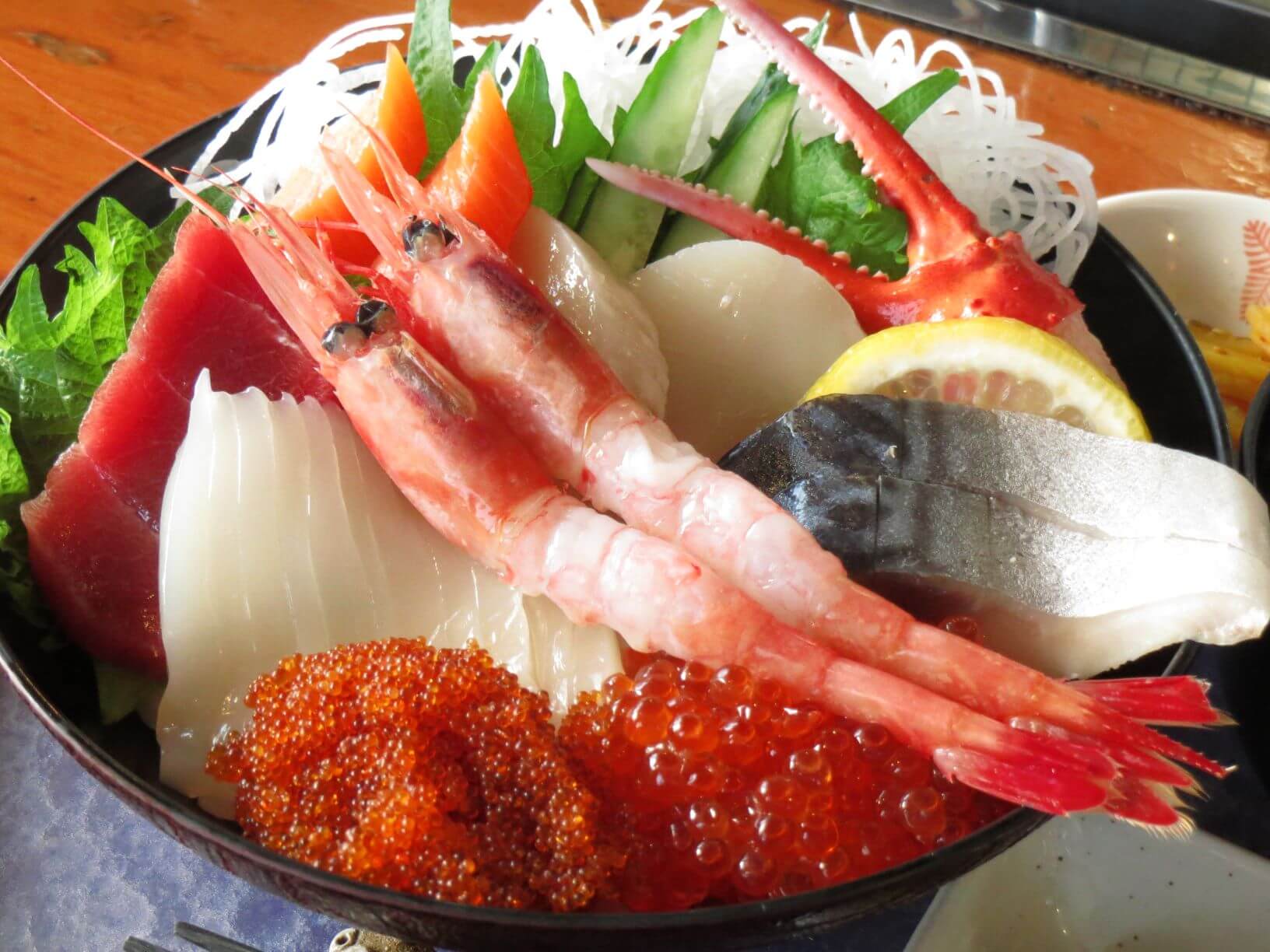
Kaisen Robata Uroco Tei
A 15-minute walk from Wakkanai station, Uroko Tei—directly by a fishmonger—is perfect for those who want to eat fresh seafood at a reasonable price. The most popular item on their menu is the gorgeous Uroco market rice bowl , containing eight types of seafood such as crab, prawn, and salmon roe (the variations of seafood depending on the season and fishery situation). Don’t miss the Robata-style grilled crabs (cooked over a sunken hearth) and the sea urchin rice bowl, which is only available from April to September. The restaurant is a joint establishment with a processing factory, which carries out such procedures as filleting and drying fish and can be visited for free, making for an attractive field-trip destination. The restaurant is open from 9am to 9pm, so you can visit anytime, morning, noon, or night.
5-6-8 Central, Wakkanai-shi, Hokkaido
http://sakanaya.uroco1.com/index.htm
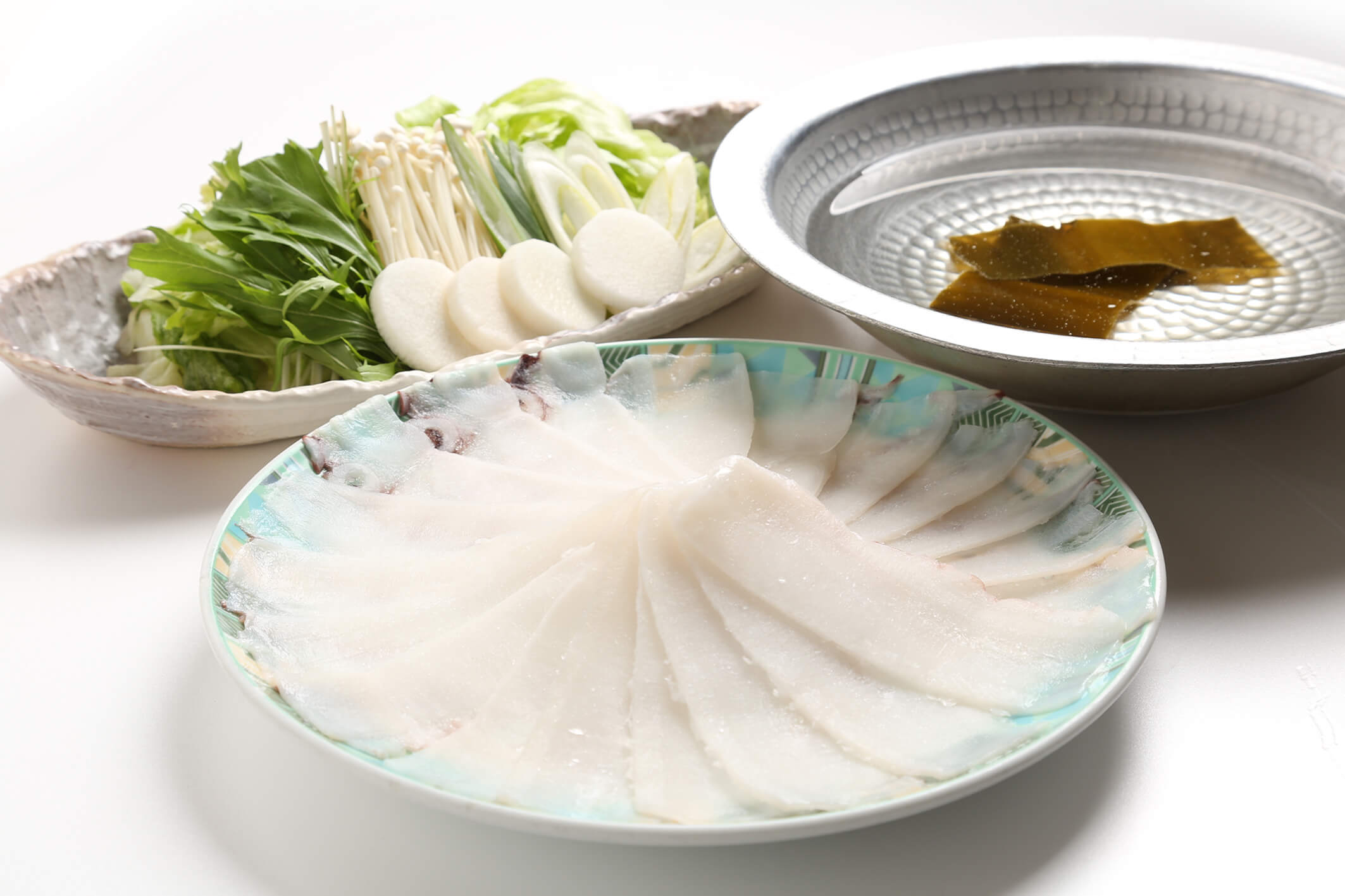
Kurumaya Genji
Off Cape Souya, Wakkanai City, the population of giant Pacific octopus is thriving. Souya, which boasts the largest catch of giant Pacific octopus in Japan, can take in about 2000 tons in a year. Some of the larger octopuses weigh more than 40 kg. Wakkanai’s specialty using the octopus is “Takoshabu” . Vegetables are placed in a pot of kombu dashi (stock made from kelp) and simmered a little, and then octopus is added to the broth. Once its flesh has begun to firm up, the octopus, along with the vegetables, is dipped in sauce. At Kurumaya Genji, a special sauce using sesame seeds is particularly popular because it goes so well with octopus. After you finish eating, don’t forget to call it a night with ramen made with octopus soup stock.
2-8-22 Central, Wakkanai-shi, Hokkaido
http://www.welcome.wakkanai.hokkaido.jp/archives/listings/genji
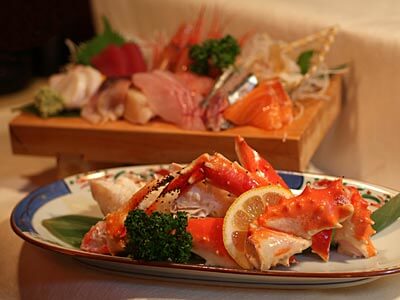
Ezo Banya
If you’re looking for an izakaya-style restaurant that attracts locals, head to Ezo banya, a short walk from Minami-Wakkanai Station. With the motto “the further you go north, the tastier the seafood gets”, Ezo banya mainly serves seafood dishes such as fresh sashimi and grilled fish. In addition, they serve local gourmet dishes such as octopus Zangi (Hokkaido-style fried octopus), soy-sauce pickled Alpine leek, and steamed potato with butter, can be tried by all. The tank inside the store is continuously stocked with crabs, allowing guests to eat fresh crabs at any time.
2-12-2 Daikoku, Wakkanai-shi, Hokkaido
http://www.welcome.wakkanai.hokkaido.jp/archives/listings/ezobanya
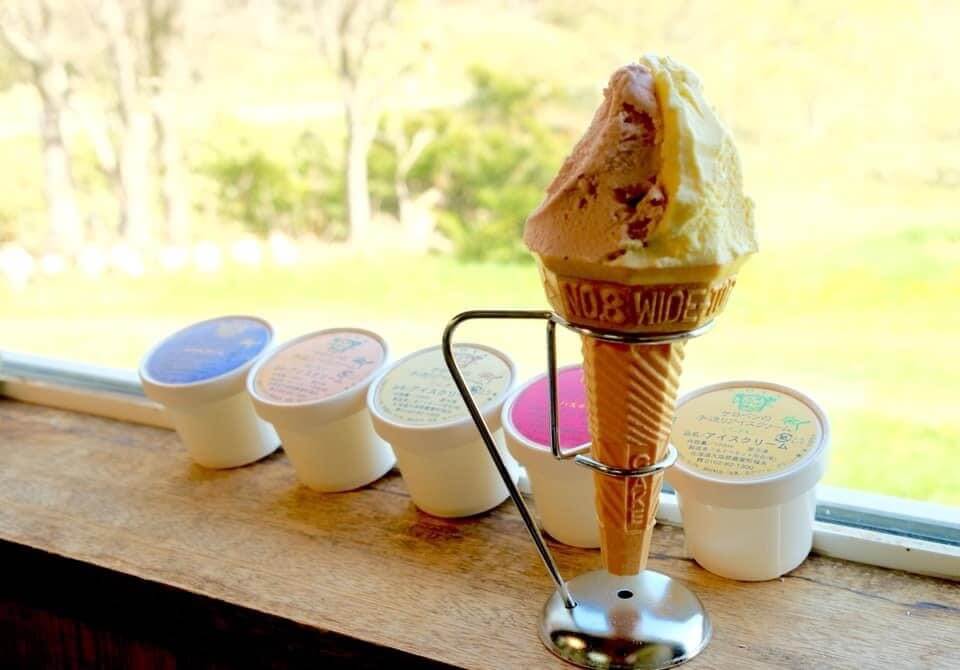
Koubou Letrier
About 30 minutes by car from Wakkanai City, Kobo Letrier in Toyotomi-cho, where there are more cows than people, sells additive-free gelato and cheese made using raw milk from its own farm. The gelato is made from only four ingredients: in addition to the raw milk, it uses homemade cream, egg yolk from cage-free fertilized eggs, and beet sugar from Hokkaido. As for flavors, they specialize in Hokkaido products such as local raspberry and pumpkin and be sure to try the Hokkaido specialty fruit flavors, such as haskap (blue honeysuckle). Open only on Fridays and Saturdays (10:00-15:00), from June to September every year.
Fukunaga, Toyotomi-cho, Teshio-gun, Hokkaido
https://www.koubou-letrier.com/
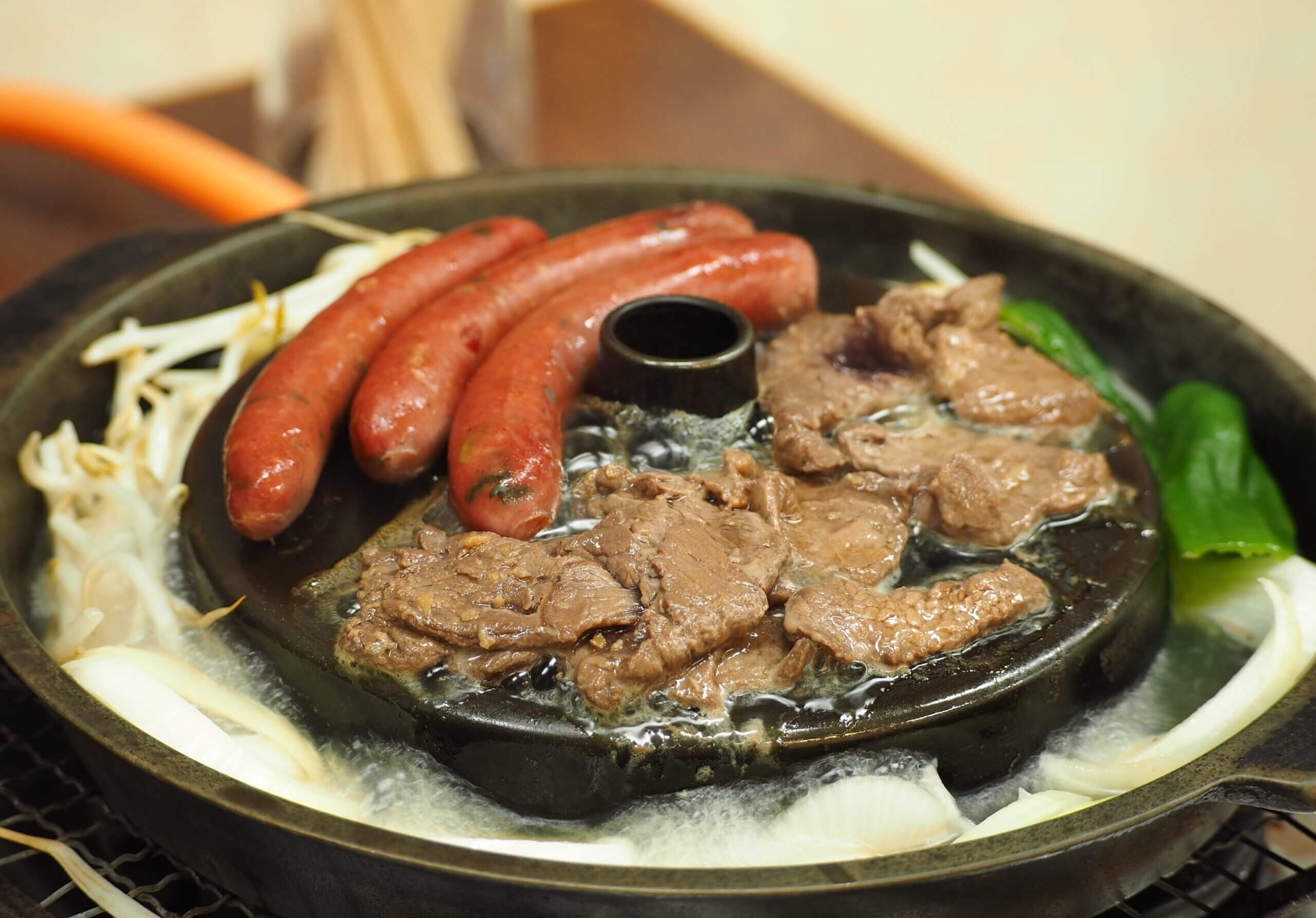
Toyotomi-cho Fureai Center Ajisai
Toyotomi Onsen is not only the northernmost hot-spring resort in Japan but is also the only hot spring in the country that contains a small amount of oil. Hot springs are said to be effective against skin diseases and are visited by many people from all over Japan. The facility “Toyotomi-cho Fureai Center” in the hot-spring village has a restaurant called “Ajisai”, where Genghis Khan can be enjoyed. We would love for you to taste the lamb meat from the nearby Sarobetsu Farm and the venison shipped from the meat-processing plant, “Sarobetsu Venison.” It is also possible to access the cafeteria without entering the hot springs.
Toyotomi-cho, Teshio-gun, Hokkaido
https://toyotomi-onsen.com/restaurant
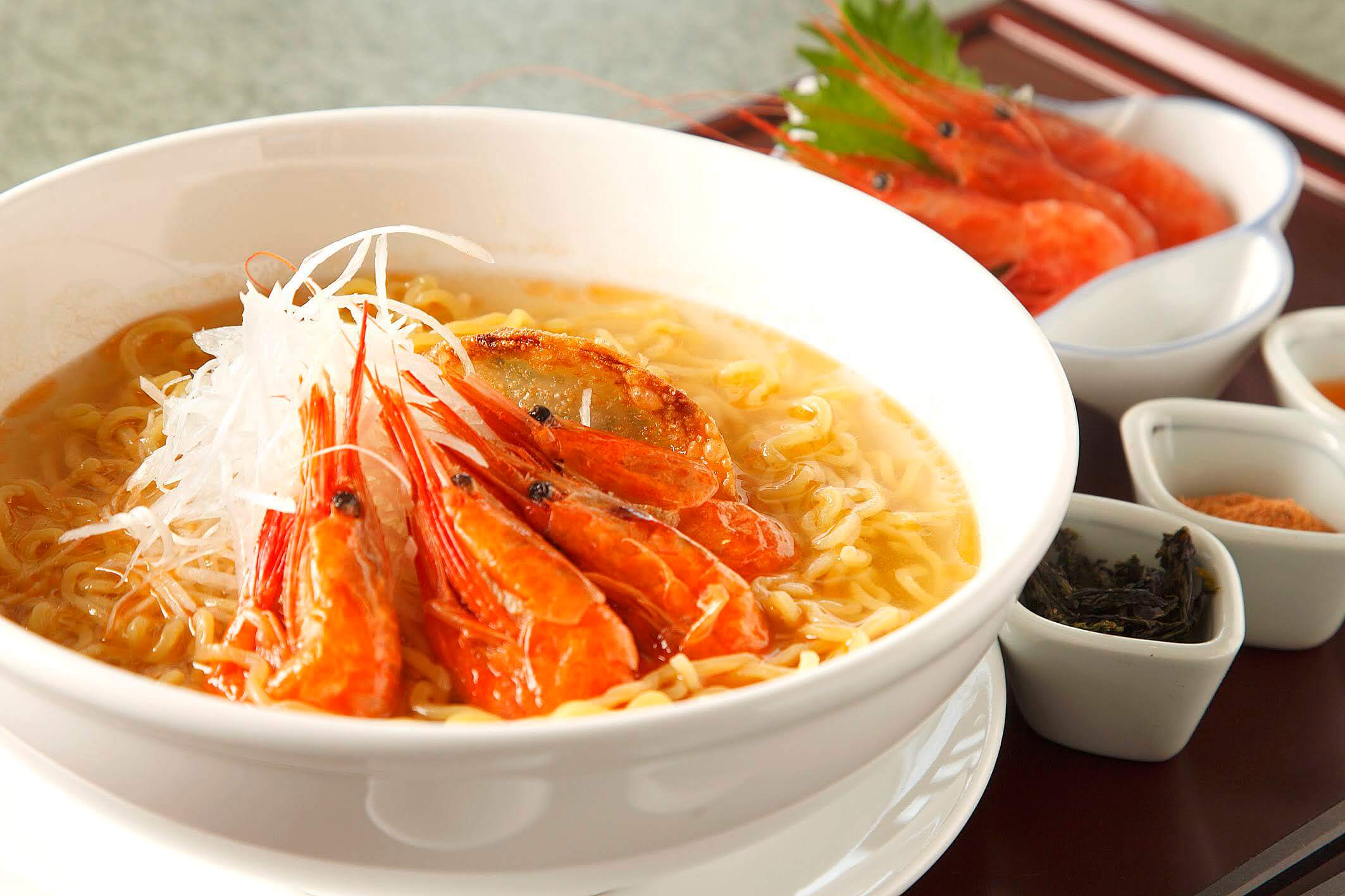
Seafood Restaurant Nitomonogatari
Haboro-cho, which faces the Sea of Japan, is a two-hour drive from Wakkanai City and has the largest amount of sweet shrimp caught in Japan. At the restaurant “Nitomonogatari” in the hot-spring hotel “Haboro Onsen Sunset Plaza” in Haboro Town, order the salt ramen with Haboro shrimp —a ramen with a lightly salted soup, topped with deep-fried sweet shrimp and shrimp-and-octopus gyoza. If the timing is right, don’t forget to watch the beautiful sunset at Haboro Sunset Beach, a 15-minute walk from the hotel.
1-29 Kita 3-jo, Haboro-cho, Tomamae-gun, Hokkaido
https://sunset-plaza.com/restaurant.html
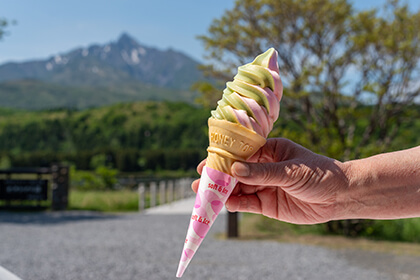
Matchan No Mise
Otatomari Pond on Rishiri Island, just across from Wakkanai by ferry, is one of the most popular tourist attractions on the island. At the “Machan shop” at the entrance of the swamp, you can eat fresh Rishiri butter-sauteed scallops , and you can also buy souvenirs such as kelp. Especially recommended is the soft-serve ice cream with Ramanas-rose and Kuma-bamboo-tea flavors. The Ramanas rose is a kind of flower that blooms in Rishiri, and the flavoring made from the flower’s extract is modestly sweet and fresh. Kuma bamboo also grows in the area surrounding the pond, and the flavoring from the bamboo tea provides a refreshing taste that spreads throughout the mouth. There’s an option to have the flavors mixed, allowing you to try both at once.
Numaura, Oniwaki, Rishirifuji-cho, Rishiri-gun, Hokkaido
https://www.mattyannoomise.com/